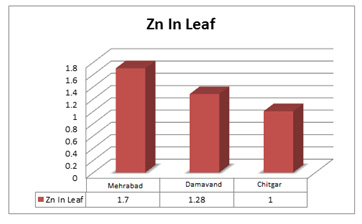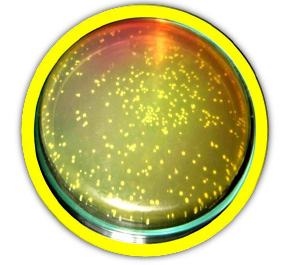Research Laboratory of Zoology. Shri Shivaji College. Akola. 444001
Article Publishing History
Received: 20/08/2016
Accepted After Revision: 25/09/2016
Silkworm, Bombyx mori is a purely domesticated insect since long, which make it a quite delicate venture, easily susceptible to viral and other diseases. The viral diseases are difficult to manage due to a very short life cycle of silkworm. One of the most effective solutions is a timely detection of such infection so that to stop spread of the disease. In the present study a polymerase chain reaction (PCR) with a set of specific primers to the Grasserie virus gene region was used to diagnose B. mori nucleopolyhedro virus (BmNPV) infection which were made available from Eurofins Genomics India Pvt Ltd Bangalore. DNA was extracted from the mid gut tissue of experimental 5th instar larvae of silkworms and amplified. After amplification the samples were loaded on 1% Agarose gel and electrophoresis was run at 65 volts. The gel was stained using ethidium bromide and visualized under UV illuminator. Results of PCR amplification helped us to detect Grasserie BmBPV infection.
Bombyx Mori, Grasserie, Nucleopolyhedro Virus (Bmnpv), Pcr, Polyhedrin Gene (Polh)
Joshi R. P, Raja I. A. Polymerase Chain Reaction Based Detection of Grasserie Virus, Bmnpv in Silkworm, Bombyx Mori. Biosc.Biotech.Res.Comm. 2016;9(3).
Joshi R. P, Raja I. A. Polymerase Chain Reaction Based Detection of Grasserie Virus, Bmnpv in Silkworm, Bombyx Mori. Biosc.Biotech.Res.Comm. 2016;9(3). Available from: https://bit.ly/2qvwR6G
Introduction
Since 4,500 years, silkworm, Bombyx mori has become a purely domesticated insect. Like other domesticated animals, it is a quite delicate venture easily susceptible to a number of seasonal diseases, (Govindan et al., 1998 and Prasad, 1999). Occurrence of seasonal disorders and diseases is a periodic surge in disease incidence, corresponding to seasons or other calendar periods (Rane, 1911).
In tropical countries Grasserie also known as the hanging disease is one of the most destructive diseases of silkworms. The causative agent is Borrelina bombycis virus, of the family Baculoviridae. The Baculoviridae comprises only 2 genera nucleorpolyhedorsis virus (NPVs) and granulovirus (GVs). In this infection the virus multiplies and forms polyhedra in the nucleus of infected cells. Infection mainly takes place through wounds and feeding of polyhedral contaminated mulberry leaves. The high temperature, humidity and their sudden fluctuation, bad ventilation, ineffective disinfection of rearing house and rearing appliances, starvation and inadequate larval spaces as well excessive moisture in the rearing bed affect spreading of the disease. The majority of baculovirus host are within the order Lepidoptera. They have also been isolated from orders Diptera, Hymenoptera, Coleoptera and some crustaceans, (Hong et al., 2000).
According to Mallika (2006) the Grasserie infected silkworm show disease symptom during the final stage of larval development and die without cocoon production resulting in the waste of expense, time and labour work therefore accountable for considerable economic losses in the Indian silk industry. The incidence of Grasserie is reported in the silkworm rearing areas of the entire district of Akola from Vidarbha region of Maharashtra, throughout the year. This infection is difficult to cure due to a very short life cycle of silkworm. The greatest way to manage Grasserie disease is to prevent disease infection. However, the presumable most effective solution for the control of Grasserie disease is to detect viral infection as early as possible in order to stop spread of the disease in rearing units. Lack of rapid and accurate disease detection technique causes severe spread of Grasserie disease seasonally (Mallika, 2006).
 |
Plate 1: Grasserie infected larvae |
Earlier, techniques have been developed to detect this viral disease such as the enzyme-link immunosorbent assay (ELISA) (Vanapruk et al., 1992), DNA hybridization (Attathom et al., 1994), colloidal textile dye-based dipstick immunoassay (Nataraju et al., 1994), and western blot analysis, (Chaeychomsri et al., 1995).
PCR is an extremely sensitive technique which amplifies target DNA sequences and PCR amplification of conserved fragment enabled the detection of low level of viral DNA (Mallika, 2006). It has been employed for the detection of viral DNA such as human virus (Umlauft et al., 1996), aminal virus (Peng et al., 1998) and plant virus (Levesque, 2001). No such detection study so far has been carried out for Grasserie virus in silkworms from, Maharasthra. So in the present study we used PCR technique and polyhedrin gene (polh) to detect early infection of Grasserie virus (BmNPV) in silkworm Bombyx mori. This study will help to prevent the spread of the Grasserie, and to eradicate this viral disease during silkworm rearing.
Material And Methods
The experimental silkworms were collected from the local farmers in Akola district and were dissected for the midgut tissue. The identification of diseased worms infected with Grasserie in the fields initially was made on the basis of gross pathology. Initially the skin shows oily and shining appearance with progress of infection, skin becomes thin and fragile and the midgut appeared milky white with inter-segmental swelling (Photo plate-I).The larvae infected with Grasserie in the rearing centers were found to be slightly sluggish.
For reliable and distinct PCR product in rapid detection, a set of specific primers procured from Eurofins Genomics India pvt.ltd Bangalore, which is the cloned nucleotide sequence within BmNPV polyhedrin gene.
Primers – (bp -424 bp)
Forward primer: 5’ AATTCGCAGTGAAACCCG 3’
Reverse primer: 5’ AGAGTCTGTGCCGATGT 3’(Mallika, 2006)
The oligonucleotide sequences of forward primer began from position 221-240 of polh ORF and reverse primer began from 616-644 of polh ORF. These primers amplified a 424bp PCR product.
Using these primers PCR was performed on the basis of studies by Mallika (2006) and using the prescribed protocol for DNA extraction (Insect DNA extraction kit Nucleopore, Genetix ltd.). DNA extracted from the midgut tissue of the non infected healthy and infected 5th instar larvae of silkworms are amplified with primers by specific polh BmNPV isolates
PCR Protocol: 1µl DNA sample (~50µl)
- Sterile water : 31µl
- Buffer : 5µl
- MgCl2: 2µl
- Template DNA : 1µl
- Forward primer : 1µl
- Reverse primer : 1µl
- Taq DNA : 1µl
After amplification the samples were loaded on 1% Agarose gel and electrophoresis was run at 65 volts. The gel was then stained with ethidium bromide and visualized under UV illuminator (Gel Doc Machine).
Results And Discussion
The specific pathogens that are difficult to culture in vitro or require a long cultivation period present in the infected silkworms, was diagnosed by PCR. Similar method was earlier used for detection of Lymantria dispar NPV (LdNPV) on the surface of an egg in Gypsy moth, by Burand et al., (1992).It was preceded, with extraction of DNA from experimental silkworms, PCR amplification, followed by detection of amplicons by visualization. Mid gut tissues of infected silkworm moths were used to illustrate the Grasserie disease detection by PCR.
On Visualization the Gel, (Photo plate-II) it is reported that DNA extracted from Grasserie BmNPV infected silkworm yielded the amplification product of ~424bps (Lane 1, 2, 3, 4, 5, i.e. BmNPV polh gene confirmed presence of Grasserie BmNPV infection but not in lane 6 and 7 indicating infection other than grasserie. The lane 8 loaded with DNA extracted from healthy non infected control larvae no PCR amplification product was found. The PCR product obtained was ~424bps for Grasserie as expected and were in accordance to that obtained from the DNA extracted from BmNPV(polh gene), in
Lane M.
As PCR products were specific to the virus used as the DNA template therefore no nonspecific sequences were observed. Strong intensity of PCR product bands were clearly visualized on the gel. These studies provide proof that PCR is a competent tool for detecting virus of Grasserie disease in silkworm.
References
Attathom T., Attathom S., Kumpratueang S. and Audtho M. (1994). Early detection of Grasserie disease of silkworm, Bombyx mori by DNA probe. pp. 257-271. In Proceeding of 32nd Kasetsart University Anual Conference: Plant Science, Kasetsart University, Bangkok, Thailand.
Burand, J. P., Orton H. H.M., Etnasami R. S. and Elkinton J. S. (1992). The use of polymerase chain reaction and shortwave UV irradiation to detect baculovirus DNA on the surface of gypsy moth eggs. J. Virol. Methods, .36: 141-150.
Govindan R., Narayanaswamy T. K. and Devaiah M. C. (1998). Principles of silkworm pathology. Seri. scientific publishers, Bangalore, p. 420.
Hong H. K., Woo S. D., Choi J. Y., Lee H. K., Kim M. H., Je Y. H. and Kang S. K. (2000). Characterization of four isolates of Bombyx mori nucleopolyhedrovirus. Arch. Virol., 145 : 2351-61.
Levesque, C. A. (2001). Molecular methods for detection of plant pathogens-What is the future? Can. J. Plant Pathol. 24: 333-336.
Mallika Kaewwises (2006). Potential Application_Of_PCR -Based Method for Early Detection of Grasserie Disease of Silkworm, Bombyx mori. A Thesis awarded By Graduate School, Kasetsart University.
Nataraju, B., Sivaprasad V., Datta, R. K. Gupta S. K. and Shamim. M. (1994). Colloidal textile dye-based dipstick immunoassay for the detection of nuclear polyhedrosis virus (BmNPV) of silkworm, Bombyx mori L. J. Invertebr. Pathol. 63: 135-139.
Prasad, N. R. (1999). Silkworm disease management and its limitations. Indian Silk, 39(4): 7 – 9.
Peng, S. E., Lo, C. F., Ho, C. H., Chang C. F. and Kou. G. H. (1998). Detection of white spot baculovirus (WSBV) in giant freshwater prawn, Macrobrachium rosenbergii, using polymerase chain reaction. Aquaculture 164: 253-263.
Rane, F. W. (1911). The Wilt Disease, Or Flacherie, Of the Gypsy Moth. Bussey Institution of Harvard University, Press.
Umlauft, F., D. T. Wong, P. J. Oefner, P. A. Underhill, R. C. Cheung, T. L. Wright, A. A. Kolykhalov, K. Gruenewald and H. B. Greenberg. (1996). Hepatitis C virus detection by single-round PCR specific for the terminal 3’ noncoding region. J. Clin. Microbiol. 34: 2552-2558.
Vanapruk P., Attathom T., Sanbatsiri K. and Attathom S. (1992). Comparison of methods for the detection of nuclear polyhedrosis virus in silkworm, Bombyx mori Linn. pp 237-243.



